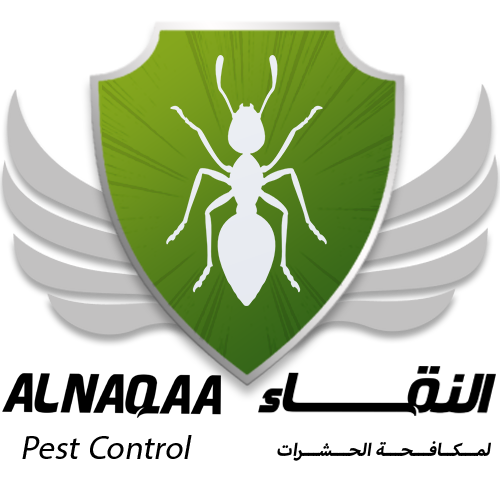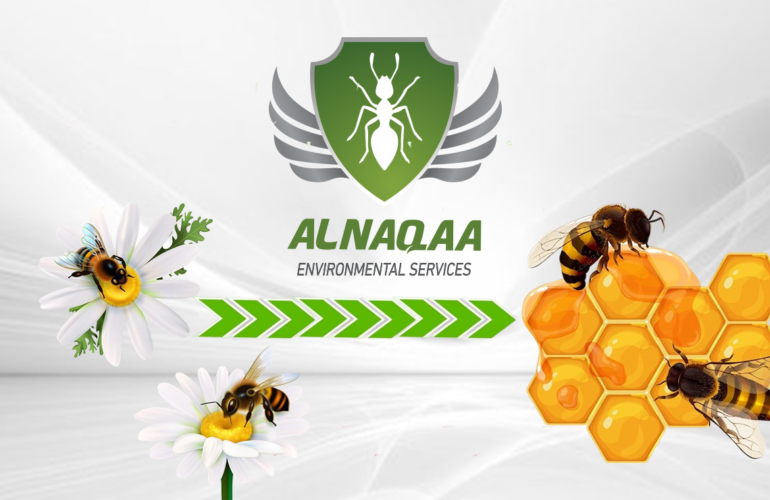Insect Host or Prey Behavior
Insects display remarkable behaviors in many different facets of their existence due to their enormous diversity and ecological importance. Insects exhibit complex behaviors in their host or prey selection behavior to choose acceptable hosts or prey for survival and reproduction. Alnaqaa for environmental services and pest control, Ras Al-Khaima, United Arab Emirates explores the fascinating world of insect host or prey selection behavior, examining the variables that affect their decisions, the sensory processes at play, and the importance of these behaviors for adaptation.
The behavior of insect hosts or prey can have a significant impact on pest management programs. Understanding the behavior of these organisms is crucial in developing effective strategies to control pests. Here are some ways in which insect-host/prey behavior affects pest management programs:
1. Feeding behavior: Insect pests have specific feeding habits and preferences. Some pests may feed on specific plant parts, while others may have a broad diet. Understanding their feeding behavior helps in developing targeted control methods such as using insecticides or employing biological control agents that specifically target the pests during their vulnerable feeding stages.
2. Movement patterns: Insects can exhibit various movement patterns, such as dispersal, migration, or aggregation. By studying their movement behavior, pest management programs can identify critical points for intervention. For example, if pests tend to migrate during a particular season, targeted control measures can be implemented along their migration routes or at breeding sites to disrupt their life cycle.
3. Reproductive behavior: The reproductive behavior of insect pests plays a crucial role in their population dynamics. Understanding their mating habits, breeding sites, and reproductive cycles can help in developing strategies to disrupt their reproduction and population growth. For instance, pheromone traps can be used to lure and trap male insects, reducing the chances of successful mating and subsequent population growth.
4. Shelter and habitat selection: Insects seek specific shelters and habitats for protection, nesting, or oviposition. By understanding their preferences, pest management programs can manipulate or modify these habitats to make them less favorable for pests. This can include removing breeding sites, implementing physical barriers, or altering environmental conditions to discourage pest establishment and survival.
5. Alarm and defense mechanisms: Some insects have alarm or defense mechanisms that can be exploited for pest management. For example, certain pests may release alarm pheromones when threatened, alerting other individuals to the presence of danger. These alarm pheromones can be synthesized and used to disrupt pest behavior or attract natural enemies that prey on the pests.
By considering the behavior of insect hosts or prey, pest management programs can develop more targeted and effective strategies. This may involve the use of pheromones, biological controls, habitat manipulation, or other methods that disrupt the pests’ behavior, breeding, feeding, or movement patterns. Ultimately, understanding and leveraging insect-host/prey behavior can contribute to sustainable and efficient pest management practices.
Numerous factors, such as the following, affect how insects choose their hosts or prey:
1. Chemical Cues: To find possible hosts or prey, insects frequently rely on chemical cues. These cues may include pheromones given off by conspecifics, volatile substances given off by plants, or specific chemical signals signaling the presence of suitable hosts or prey.
2. Visual Cues: For insects with advanced vision, visual cues are essential in choosing their hosts or prey. Insects may recognize and find their favorite hosts or prey by using color, shape, movement patterns, and other visual traits.
3. Physical characteristics: Insect selection may be influenced by the physical characteristics of hosts or prey, such as size, texture, or the presence of particular features. Some insects may have adapted mouthparts or ovipositors that are specialized to particular types of hosts or prey to take advantage of those traits.
4. Accessibility of possible Hosts or Prey: The availability of possible hosts or prey in the environment has a big impact on how insects choose their prey. Insects can show preferences for hosts or prey that are more accessible or simple to catch.
Selection of hosts or prey via sensory mechanisms
Insects use a variety of sensory organs to identify and assess possible hosts or prey, including:
1. Olfaction: Insects can detect volatile chemical substances released by hosts or prey thanks to extraordinarily sensitive olfactory receptors in their bodies. They can detect particular smells that are connected to good or unfavorable settings, which influences their decision-making.
2. Gustation: Insects need to be able to taste or sample possible hosts or prey. They evaluate the chemical makeup of surfaces or substances using taste sensors on their lips or feet to decide whether they are suitable.
3. Vision: To recognize and find hosts or prey, insects with good vision rely on visual clues. They could be able to identify certain colors, patterns, or motions that are connected to their favorite targets.
4. Vibrational Communication: Some insects use vibrational signals to find hosts or prey, especially those that parasitize or prey on other insects. They frequently use specialized sensory organs or structures to identify vibrations emitted by their targets.
5. Auditory Communication: Auditory cues are used by insects that use sound to communicate with one another or to seek hosts or prey. They can recognize particular acoustic frequencies or patterns that correspond to the targets they favor.
Host or Prey Selection Behavior’s Adaptive Significance
The behavior of insects in choosing their hosts or prey has important evolutionary and adaptive ramifications.
1. Increasing the acquisition of resources: Insects choose hosts or prey that offer them necessary resources, such as food, housing, or ideal conditions for reproducing, such as. Insects improve their chances of surviving, growing, and reproducing by selecting the best resources.
2. Avoiding Predators or Parasites: Insects can stay away from predators, parasites, or rivals by choosing their hosts or prey carefully. By choosing hosts or prey that limit their exposure to potential dangers, insects might lessen their chance of being eaten by predators or parasitized.
3. Niche Specialization: Some insects have adapted their selection behavior to exploit particular ecological niches by becoming specialists in particular hosts or prey. They can effectively use the resources at hand thanks to their specialization, which also lessens competition from other species.
4. Coevolutionary Dynamics: Coevolutionary interactions between insects and their hosts or prey are frequently driven by the host or prey selection behavior of the insects. In an ongoing evolutionary arms race, hosts or prey may generate counter-adaptations as insects adapt to take advantage of or evade particular hosts or prey.
5. The diversity of insect species can be attributed to host or prey selection behavior. Insects can occupy various ecological niches by choosing different hosts or prey, which can result in speciation and the formation of new species.
A fascinating part of insect biology is the host or prey selection behavior of insects. Insects deliberately choose their hosts and prey to increase their chances of survival and reproduction. This is accomplished by a complex interplay of elements, including chemical cues, visual cues, and sensory systems. Understanding these activities improves our knowledge of insect ecology. This activity has important adaptive relevance and adds to the coevolutionary dynamics between insects and their hosts or prey.
Alnaqaa for environmental services and pest control, the head of the tent, the United Arab Emirates provides pest control services that can create effective and long-term plans to manage pest populations, reduce damage to crops or structures, reduce the need for chemical pesticides harmful to the ecosystem by taking advantage of the understanding of insect behavior as well as the use of safe strategies to control the number of insects and provide a clean environment.
Finally, we hope our clients find this article valuable for them in understanding the basic concepts of host/prey behavior and rationalizing the impact of insect behavior on the insect pest management process.






